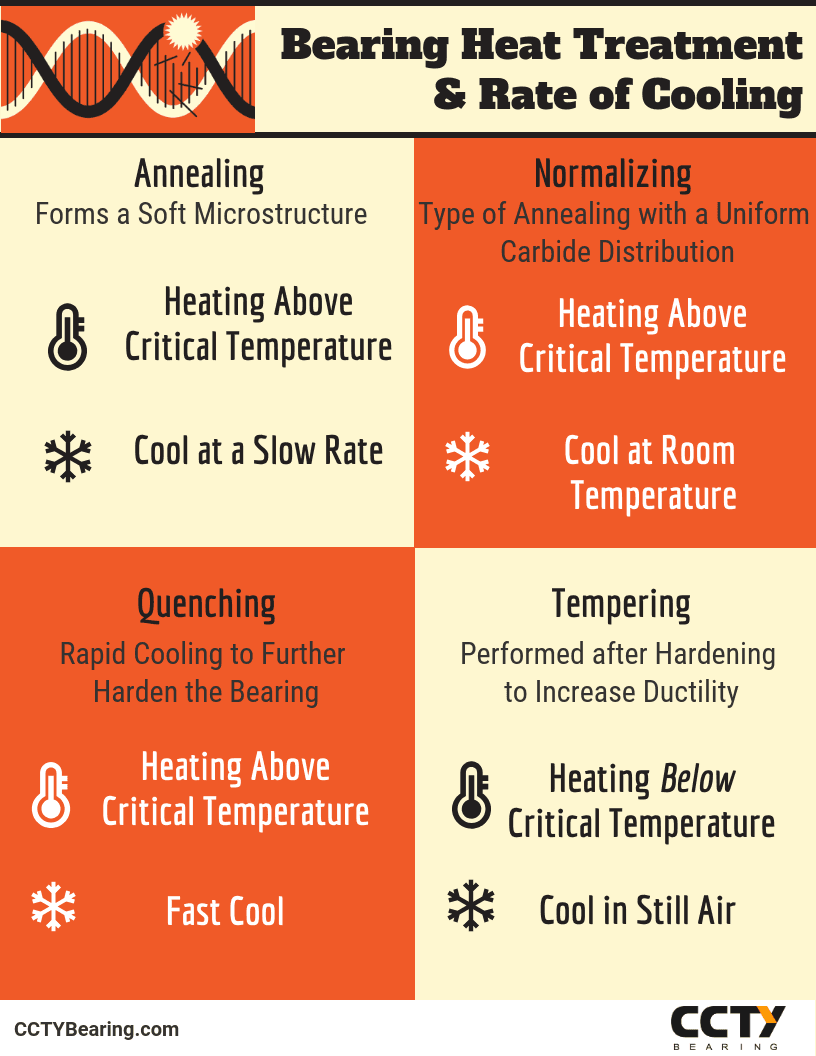Metal components in bearings come in contact with other metal or containments, so the hardening process during manufacturing is a vital to ensuring less wear and a longer service life. Hardening also provides the optimal physical characteristics for the bearing’s use.
There are three main types of hardening commonly used on bearing applications: case, induction and through. Each involves:
- Heating to a specified temperature under tight controls
- Holding the temperature for the appropriate amount of time
- Cooling according to the methods which can range from a slow cool in a furnace to a fast cool through quenching.
Case hardening – or surface hardening – is a lot like how it sounds, hard on the exterior and soft in the interior. The process results in the surface metal hardening while the material below the exterior remains soft. This structure allows the core to maintain its toughness. Case hardening is specified for applications where a shock load is likely to occur, such as in construction equipment.
Process: Bearing case hardening uses one of two methods carbonizing or induction hardening.
Carbonizing hardens the bearing in an atmosphere of ammonia gas and dissociated ammonia, while the bearing is heated to 920 degrees Celsius. The length of time the bearing spends in this charged atmosphere determines the depth of the hardness. Using this method, bearings can be case hardened after being machined, quenched and tempered with only a little distortion.
Induction hardening uses an electric wire coil to achieve the same results as carbonizing, however the process can be localized to a specific area, such as a ball bearing’s raceway. This form of non-contact heat treatment uses electromagnetic induction. The depth of the hardness is determined by the frequency of the voltage, material composition and heating time frame.
Through hardening – also known as quench and temper – is specified for applications where uniform hardness, strength and wear resistance is required. When a bearing uses this method, it becomes hard from the surface through to the core. This form of hardening is more cost efficient than case hardening, but may result in brittle steel if improperly tempered.
Process: Through hardening creates fine carbide throughout the steel in a process that uses rapid quenching after heating. The bearing is heated, then quenched in either a salt or oil bath, and tempered to increase ductility.
The goal of hardening is to increase the strength of the metal. A secondary process, such as tempering, is used to soften the material, increase toughness, reduce brittleness or increase ductility.



